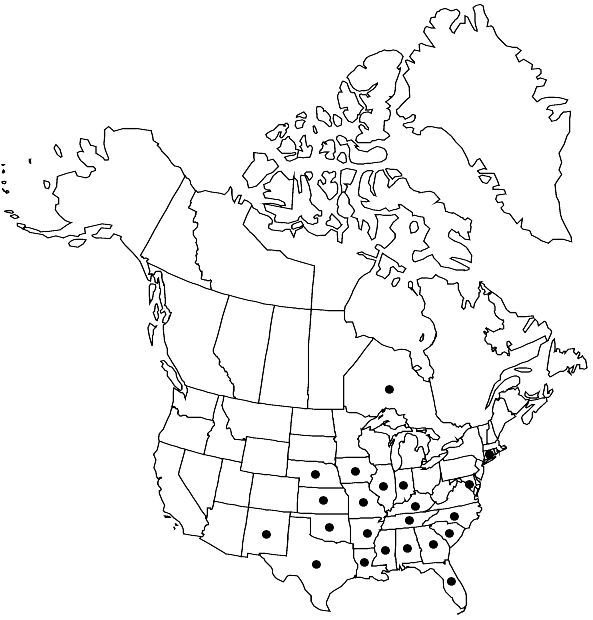Funaria flavicans
Fl. Bor.-Amer. 2: 303. 1803,.
Plants 2–5 mm, with a basal antheridial branch, yellow-green. Leaves 2–3 mm, imbricate, concave, scarcely contorted when dry, broadly ovate to obovate, abruptly narrowed to an acuminate tip, margin entire or nearly so; laminal cells hexagonal to oblong-hexagonal distally, little differentiated at the margins, becoming elongate toward the base. Seta 8–20 mm, straight to slightly flexuose, not or scarcely hygroscopic. Capsule 2–3 mm, ovoid-pyriform from a short neck, asymmetric by the weakly oblique mouth, inclined to horizontal, becoming striate and nearly cylindric when dry and empty, annulus large and revoluble, operculum convex, exothecial cells narrowly oblong and transversely elongate in 3–5 rows below the mouth; peristome teeth yellowish, lanceolate, somewhat trabeculate proximally, becoming hyaline and appendiculate, fusing to form a latticed dome, papillose striate proximally, papillose at the tips; endostome segments about 1/4 as long as the teeth, bluntly 2-lobed or emarginate, papillose. Calyptra cucullate, rostrate, smooth. Spores 18–30 µm, obscurely angled, finely papillose by low irregular ridges.
Habitat: Sterile soil or gravel in disturbed areas such as burned over woods, around foundations, and roadsides
Elevation: low to moderate elevations
Distribution

Ont., Ala., Ark., Conn., Fla., Ga., Ill., Ind., Iowa, Kans., Ky., La., Md., Miss., Mo., Nebr., N.Mex., N.C., Okla., S.C., Tenn., Tex.
Discussion
Funaria flavicans is found throughout southeastern Canada and United States east of the Rockies. It differs from the weedy and variable F. hygrometrica in the barely hygroscopic seta, the slightly asymmetric capsule that becomes weakly plicate when dry, and the short segments of the endostome.
Selected References
None.